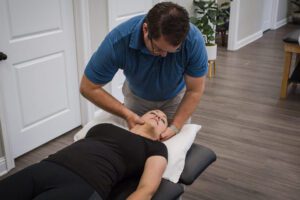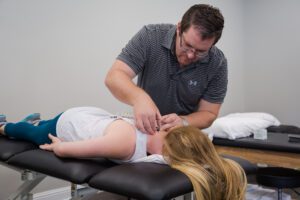


TMJ (temporomandibular joint) dysfunction refers to problems with the jaw joint and the muscles controlling jaw movement. Physical therapy is commonly used to treat TMJ dysfunction by addressing pain, improving function, and reducing symptoms. Here are some conditions related to TMJ dysfunction that physical therapy can treat:
Jaw Pain: Pain in the jaw or around the temples, often due to muscle tension or joint inflammation. Physical therapy can help relieve pain through manual therapy, exercises, and modalities like heat or cold therapy.
Limited Jaw Movement: Difficulty opening or closing the mouth fully, which may occur due to muscle stiffness or joint issues. Physical therapy includes exercises to restore normal jaw movement and improve flexibility.
Clicking or Popping Sounds: Audible sounds from the jaw when opening or closing the mouth, often caused by misalignment of the jaw or disc displacement in the TMJ. Therapy may include exercises to improve joint mechanics and reduce clicking.
Headaches: Tension headaches often occur as a result of TMJ dysfunction, especially when the jaw muscles are tight. Physical therapy addresses muscle tightness and can reduce the frequency and severity of headaches.
Facial Pain: Pain in the face, neck, or around the jaw due to muscle overuse or joint issues. Physical therapy can help alleviate this pain through exercises, stretching, and manual techniques.
Teeth Grinding or Clenching (Bruxism): Often associated with TMJ dysfunction, bruxism can cause wear on teeth and increased jaw pain. Physical therapy may help by addressing muscle tension and teaching relaxation techniques.
Neck and Shoulder Pain: Tension from TMJ dysfunction can also affect the neck and shoulders. Physical therapy can help alleviate referred pain by improving posture, strengthening muscles, and reducing muscle tightness.
